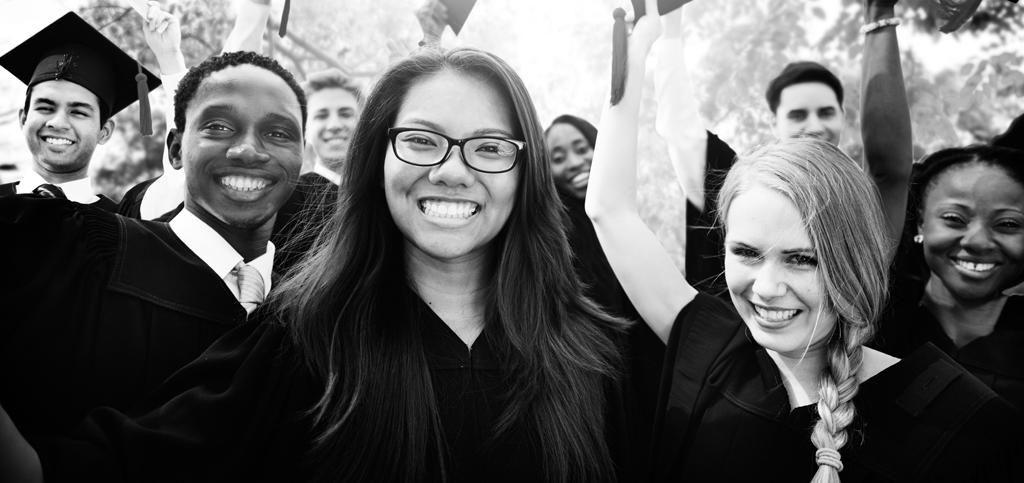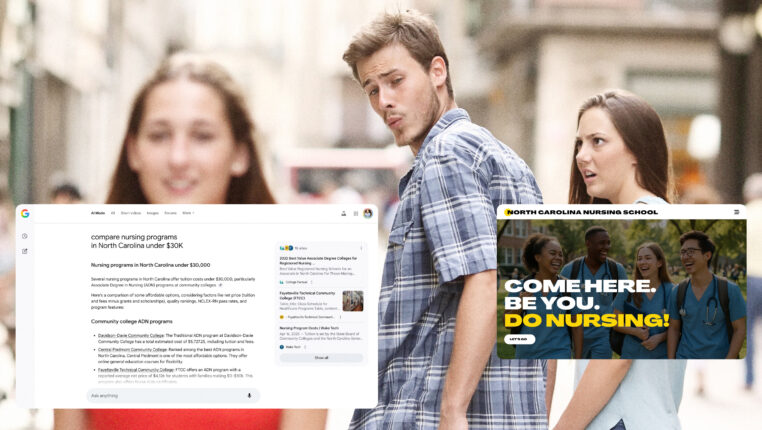Editor’s Note: This blog post is the first in a series resulting from a conversation between eCity Interactive and Chris Barrows of NYU and Joel Renner of George Washington University. Check back in the coming weeks for future articles about social media and higher education.
A while back, I was reading a profile on an up-and-coming local lawyer. A voracious networker and dedicated volunteer, his career as an attorney was starting to earn him a little extra positive attention. What made his story so inspiring was the background from which he came. His mother struggled with alcoholism, and his father struggled to make ends meet. The lawyer eventually fell victim to the circumstances of his surroundings, getting kicked out of his high school, arrested for selling drugs, and at one point, shot while standing near a neighborhood recreational center.
In the article, both the lawyer’s undergraduate university and law school were mentioned, but it was the undergraduate university that garnered a larger share of the attention. The lawyer wore their lapel pin during his interview, credited an administrator for helping him get involved, and sat on their board of alumni directors.
Of course, without his professional degree, his career undoubtedly wouldn’t be the same. But that school was hardly mentioned in the article. And all of this had me thinking: if these two schools reached out to him today, which school do you think he would donate to?
I was thinking about that article during a recent conversation with Chris Barrows, host of the “Why I Social” podcast and Digital Marketing Professional at NYU, and Joel Renner, founder of @socialroadtrip and Manager of Digital Strategy at George Washington University’s School of Business.
Barrows and Renner are champions of using social media to build a community, both within their respective schools and professionally among their peers. During our wide-ranging conversation, we touched on a number of topics relating to higher education and social media, including schools doing social media right, missed opportunities, and ways for universities to improve on social media. But as we talked about alumni and social media in particular, I just kept coming back to that article in the paper.
Asking alumni for money isn’t something that’s going away anytime soon. But how can schools better engage their alumni in ways that don’t involve asking for money, so that when the time comes to ask for a financial gift, the ask doesn’t feel like it’s coming out of left field? How can schools build a true community of alumni, ready and willing to serve as brand ambassadors, rather than an email list of potential donors ready to dust off as the calendar year comes to a close? Barrows and Renner have a few ideas.
Don’t Wait Until They’re Alumni
Your first interaction with an alum shouldn’t be on Giving Tuesday, says Chris Barrows. “If you are just reaching out when they become alumni, the immediate reaction from them is going to be, ‘They want money,’” says Barrows.
“Now, they literally get their degree conferred and in the same email, there’s a link about how to donate,” says Renner. The tactic of targeting new alumni, and even seniors preparing to graduate, is part of a larger strategy in which universities work to build a habit of generosity among young and soon-to-be alumni while simultaneously boosting the number of alumni who donate, a part of U.S. News Rankings criteria. But that strategy can backfire, and when it does, it tends to do so somewhat publicly; alumni aren’t shy about calling out their new alma maters.
Simply put, you need to talk with your alumni before they become alumni, and not with the purpose of building a habit of generosity. Communicate with them as students and focus your efforts on building a relationship with them over time, says Barrows. That way, by the time they become alumni, you could turn the relationship around to the point where, “many of your alumni may think, ‘Hey, I’m doing something really cool. Is there something I could do with you on this?’ That’s where the real community can start because now they’re reaching out to you. There’s an affection there, and that is I think something really being missed right now.”
Ask For Their Most Valuable Resource
Spoiler alert: it’s not money. “The most valuable thing you have in life is time,” says Joel Renner. Renner believes the biggest problem with alumni communication is that there’s no difference between communication with older and younger alumni. “They [young alumni] get the same ask but at a lower level. And maybe the email template is cooler.” Instead, says Renner, focus your effort on young alumni by asking them to donate their time to the school. “There are so many ways with technology that we can bridge time and space,” says Renner. “We don’t have to worry about how far away someone is now.”
44 million Americans are in debt from student loans, with the average 2016 college graduate having borrowed more than $37,000. Research has shown that graduates with student loans are less likely to make a gift to their alma mater. Combined, these figures make a clear case for finding alternative ways to build a culture of giving among young alumni. Invite them to sit in on panels, solicit their feedback about programs or activities, ask them to chat with admitted students, or invite them to networking events happening near their location. Just don’t immediately ask them for money. “I understand [development offices] are under a crunch,” says Renner, “but if you build community, the next time you have a real need and you send something out asking for their financial support, they’re going to look at that in a much more positive light.” The takeaway? Invite your young alumni to give back to the university in the ways that they can.
Break the Siloes
Both Renner and Barrows remarked on the breakdown in communication that is the result of higher education’s long-standing siloed culture. “There is nothing at most universities that allows the alumni and development folks to understand how alums can give back,” says Renner, who adds that there isn’t always a direct line of communication to a school’s career center or various degree programs. Having those clear communication channels with various offices across campuses, however, can make a world of difference, he says. “[Alumni relations] needs to have an understanding of how people can give back because when you create more connections and relationships, your alumni, over time, will become more willing to donate.”
“If you are just reaching out when they become alumni, the immediate reaction from them is going to be, ‘They want money,’” – Chris Barrows.
“Higher education is supposed to be leading the way and educating,” says Barrows, “but we are so often behind because of the bureaucracy in front of us. That’s part of the siloed issue.” Barrows believes that breaking the siloes can have an immediate benefit for schools. He imagines a scenario where admissions and alumni relations could use a central CRM to facilitate powerful conversations between prospective students interested in particular majors and alumni working in related fields. Such a scenario would be a boost to a prospective student and offer an alum the opportunity to give back to the school in a way that’s meaningful without opening their wallet. “It doesn’t have to be complicated,” says Barrows.
Renner adds that while a central CRM is ideal, it’s not the real key to an engaging community. “Schools have to track people from the start to the end. We have to prove the outcomes. You don’t need to have a single CRM though,” says Renner. He adds that while a central CRM makes it easier for different departments to gather around data, only schools committed to communicating internally will fully reap the rewards of that CRM collaboration. Both Renner and Barrows believe most schools and colleges are a long way from that point.
The most recent data on CRM use in higher education backs them up. In a 2014-2015 report by the American Association of Collegiate Registrars and Admissions Officers (AACRAO), only three percent of higher education institutions reported using their CRM for student lifecycle support, while only one-third of respondents reported fully integrating their CRM data with their Student Information System (SIS) data. Meanwhile, two-thirds of respondents reported that their institution was not maximizing the use of their CRM.
Whether you work at a large public university or a small liberal arts school, your alumni network is one of the largest, and most important, audiences you have. In order to make the most of that network, however, higher education professionals must learn to see their alumni for more than a contribution to a scholarship fund. To do that, start building relationships, digitally and offline, with your alumni before they graduate, acknowledge the variety of ways in which they can contribute to your university, and communication with other offices on campus about ways to connect your alumni with current, admitted, and prospective students. Finally, appreciate your young alumni’s financial situation in the early days, months, and years after graduation. Not doing so could land you in the headlines for all the wrong reasons.




